Glasgow City, Lanarkshire
An establishment known as the Town's Hospital and Poorhouse was founded in Glasgow in 1731. It was located at the Old Green on Great Clyde Street, at the junction with what is now Ropework Lane.
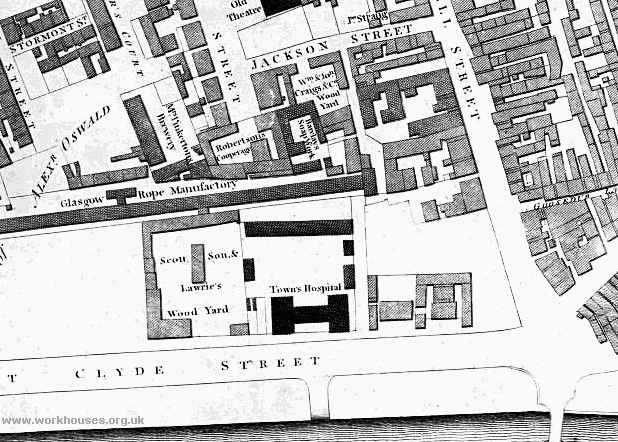
Towns Poorhouse site, 1807
The institution was managed by the Lord Provost and a group of 48 directors: 12 elected by the town council, 12 by the General Session (representing the church in each parish), 12 by the Merchants' House (the merchants' guild), and 12 by the Incorporated Trades (the producers' guild). The Hospital was intended to 'aliment and educate upwards of one hundred and fifty-two old men, widows, and orphans of the city'. The original H-shaped building was much admired for its palatial appearance. It was later supplemented by a new infirmary block at its rear, with accommodation for lunatics in its basement — often flooded by the river nearby. To encourage the destitute to make use of the poorhouse, the directors decreed that inmates were to 'enjoy a desirable measure of liberty, good comapny. convenience for retirement, peace and quiet, freedom from all hurtful toil and care, with good provisions, liberty to go to church on the Sabbath and to week-day sermons and to see their friends, with abundant means of instruction and edification'. A year after it opened, 61 old people and 90 children were in residence. The Town's Hospital was closed in 1844.
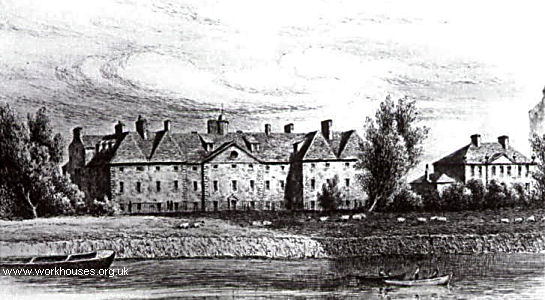
Town's Poorhouse from the south
After 1845, poor law provision in Glasgow was divided between four parishes: City, Barony, Govan and Gorbals. Gorbals never set up a poorhouse and was absorbed by Govan in 1873.
City Poorhouse
The Glasgow City Poorhouse (also sometimes known as the Town's Hospital after its predecessor on Clyde Street) was opened in 1845 in premises at the north side of Parliamentary Road, to the west of its junction with St James Road. The building was originally erected in 1809 as the Glasgow Lunatic Asylum. With 1,500 beds, the City Poorhouse was one of the largest pauper institutions in Britain.
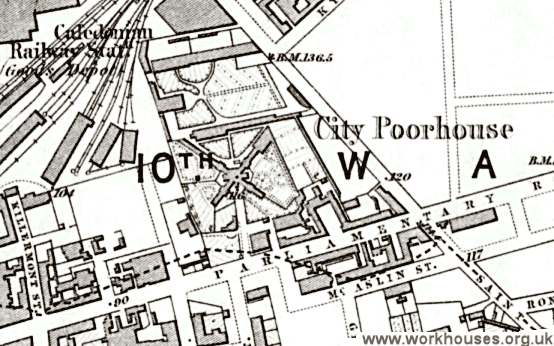
Glasgow City Poorhouse site, c.1858
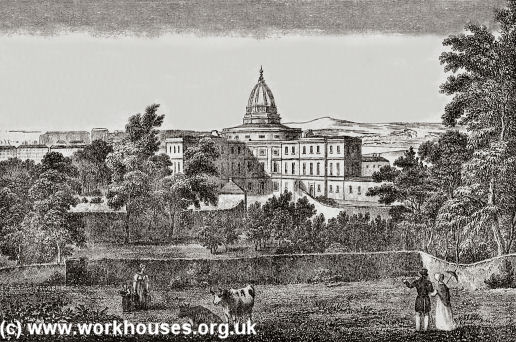
Glasgow City Poorhouse premises, c.1828
The poor conditions in the City Poorhouse were a recurring subject of concern with both the City Council and the Parochial Board. In 1882, separate reports by the Board's Secretary and Medical Officer condemned the building. In 1887, after press reports of overcrowding, Dr Littlejohn and the Council's Medical Officer Dr Russell were appointed to conduct an enquiry. Their report highlighted a long list of deficiencies including:
- Inadequate separation of sick and able-bodied.
- Very poor sanitary arrangements such as badly sited and separated water closets.
- The use of water closets as sculleries and pantries.
- Poor bathing facilities — in one instance, 290 male inmates took their weekly bath in two baths, a process which took from 7am to 7pm.
- Inadequate open-air exercise facilities.
- Badly lit and ventilated day rooms.
Many of the buildings problems were aggravated by its location on a very busy main road near to the North British Goods Station.
The City Poorhouse closed in 1905 following a merger with Barony parish.
With the creation of a single poor law authority in Glasgow, three new establishments were built: Stobhill Hospital, and the Eastern and Western General Hospitals.
Stobhill Hospital
A poor law hospital was built Stobhill in 1903-4 at a site on the northern boundary of the city. It provided accommodation for the infirm and chronic sick poor, and for children. It provided nearly 2000 beds in 28 red-brick two-storey pavilions, many of which were connected by corridor. It had 1,867 beds, of which 200 were for psychiatric assessment.
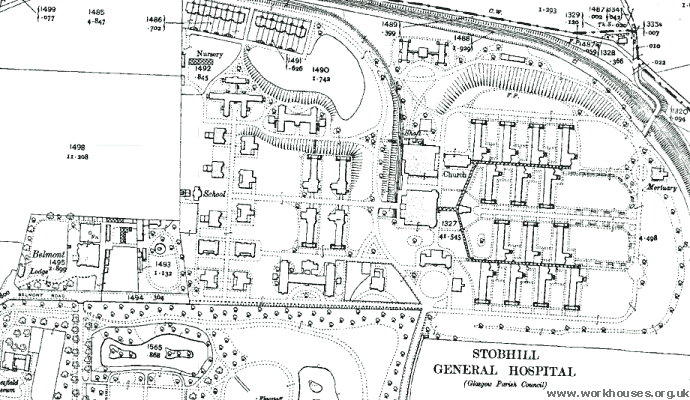
Stobhill Hospital site, c.1913
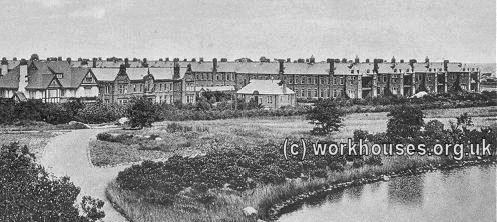
Stobhill Hospital from the soiuth-west, 1917
© Peter Higginbotham.
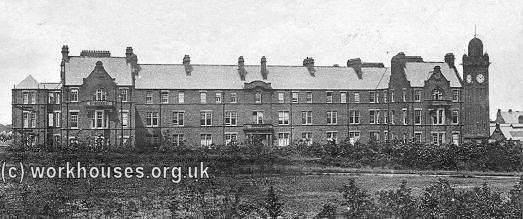
Stobhill Hospital from the south, 1917
© Peter Higginbotham.
During the First World War, the hospital was used for wounded servicemen and known as the 3rd and 4th Scottish General Hospitals. In 1930, Stobhill became a Glasgow Corporation hospital.
Western District Hospital
The Western District Hospital, locally known as Oakbank Hospital, was built in 1902-04 for the treatment of acute medical and surgical cases. It was sited on a triangular plot bounded by Possil Road, Garscube Road and a canal. Like Stobhill, it was taken over for military use during the first World War. It joined the National Health Service in 1948 but closed in 1971.
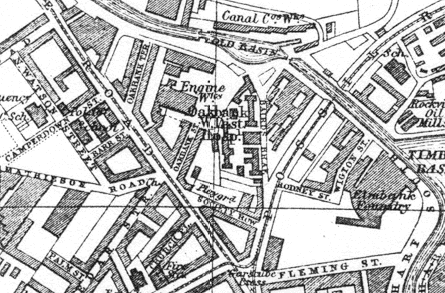
Western District Hospital site, 1924
Eastern District Hospital
Eastern District Hospital, also known as Duke Street Hospital, was built as a 240 bed acute hospital and opened in 1904. It has been suggested that the hospital contained the first psychiatric assessment wards to be incorporated in a Scottish general hospital. It joined the National Health Service in 1948 under the Board of Management for Glasgow Royal Infirmary. It finally closed in 1996.
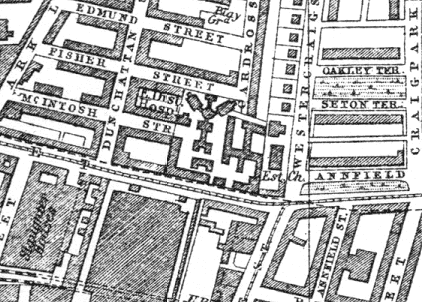
Eastern District Hospital site, 1924
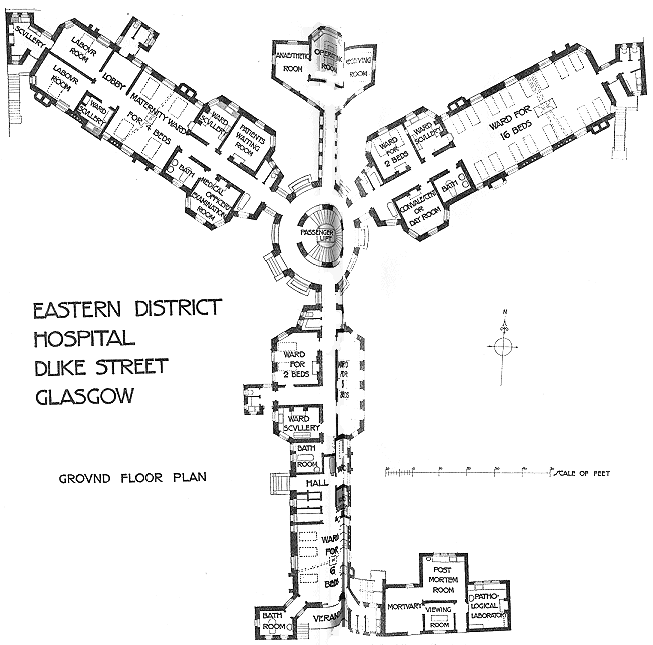
Eastern District Hospital plan, 1908
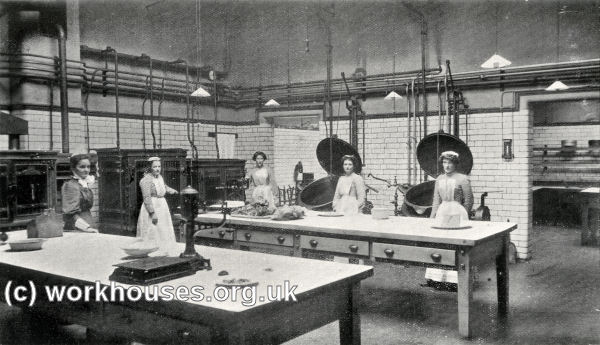
Glasgow Eastern District Hospital kitchen, early 1900s.
© Peter Higginbotham.
Children's Homes
In around 1910, Glasgow established a Training School for Girls at Clyde Cottage, King Street, Dunoon. The inmates placed there were in the care of a trained nurse and taught the skills for domestic service.
In 1911, the parish opened the Dunclutha Home for Physically Defective Young Persons at Dunclutha Lane, Kirn, near Dunoon.
Other Institutions
Other charitable institutions in Glasgow included:
- Mossbank Industrial Schools, Hogganfield. It was intended to "lay hold of and educate neglected and destitute children who, having no parents, or worse whose parents living themselves in vice and profligacy, leave their offspring to grow up in ignorance or become vagrants and criminals." It taught 400 boys trades and 200 girls domestic duties.
- Buchanan Institution, 47 Greenhead Street. For the education and industrial training of destitute boys.
- House of Refuge and Night Asylum, North Frederick Street.
- Night Asylum for the Houseless and House of Industry for Indigent Females, 71 North Frederick Street.
- Glasgow Home for Deserted Mothers, 308 Renfrew Street.
- Training Homes for Canada (Boys), Cessnock House, Govan Road.
- Training Homes for Canada (Girls), Elmpark, Govan Road.
- Deaf and Dumb Asylum, Prospect Bank, Queen's Park.
Staff
Inmates
Records
Note: many repositories impose a closure period of up to 100 years for records identifying individuals. Before travelling a long distance, always check that the records you want to consult will be available.
- Glasgow City Archives, The Mitchell Library, 210 North Street, Glasgow G3 7DN, Scotland.
-
Greater Glasgow NHS Board Archive,
now located at The Mitchell Library, 210 North Street, Glasgow G3 7DN, Scotland.
- Stobhill Hospital - Registers of operations (1920-39); Registers of deaths (1935-66); Daily returns of patients (1929-66); Official visitations report book (1903-53); Maps and plans, 1889-1954.
- Western District Hospital - Maps and plans (1900-65); various other records (1950-65).
- Eastern District Hospital - Registers of patients (1904-73); Registers of nurses (1904-54); etc.
Bibliography
Links
Unless otherwise indicated, this page () is copyright Peter Higginbotham. Contents may not be reproduced without permission.


